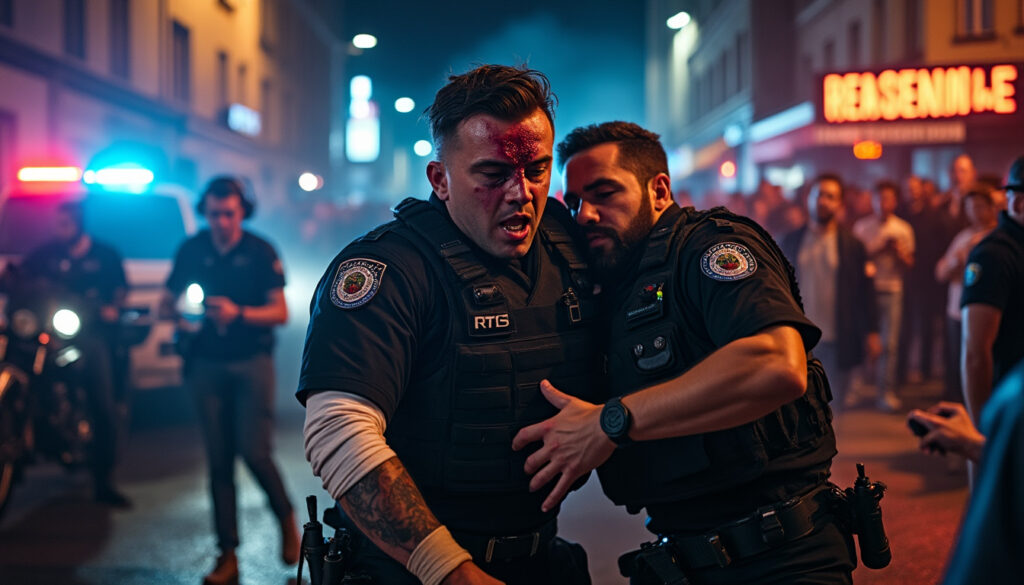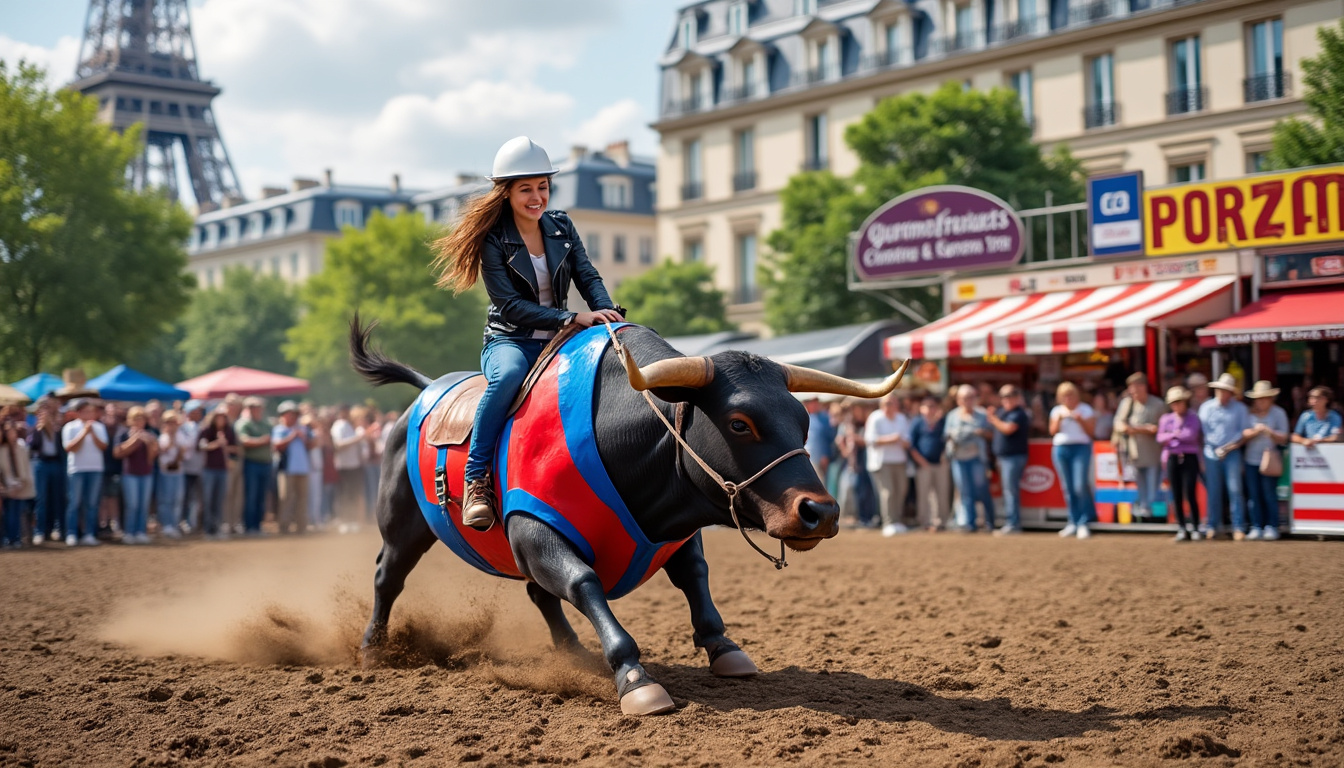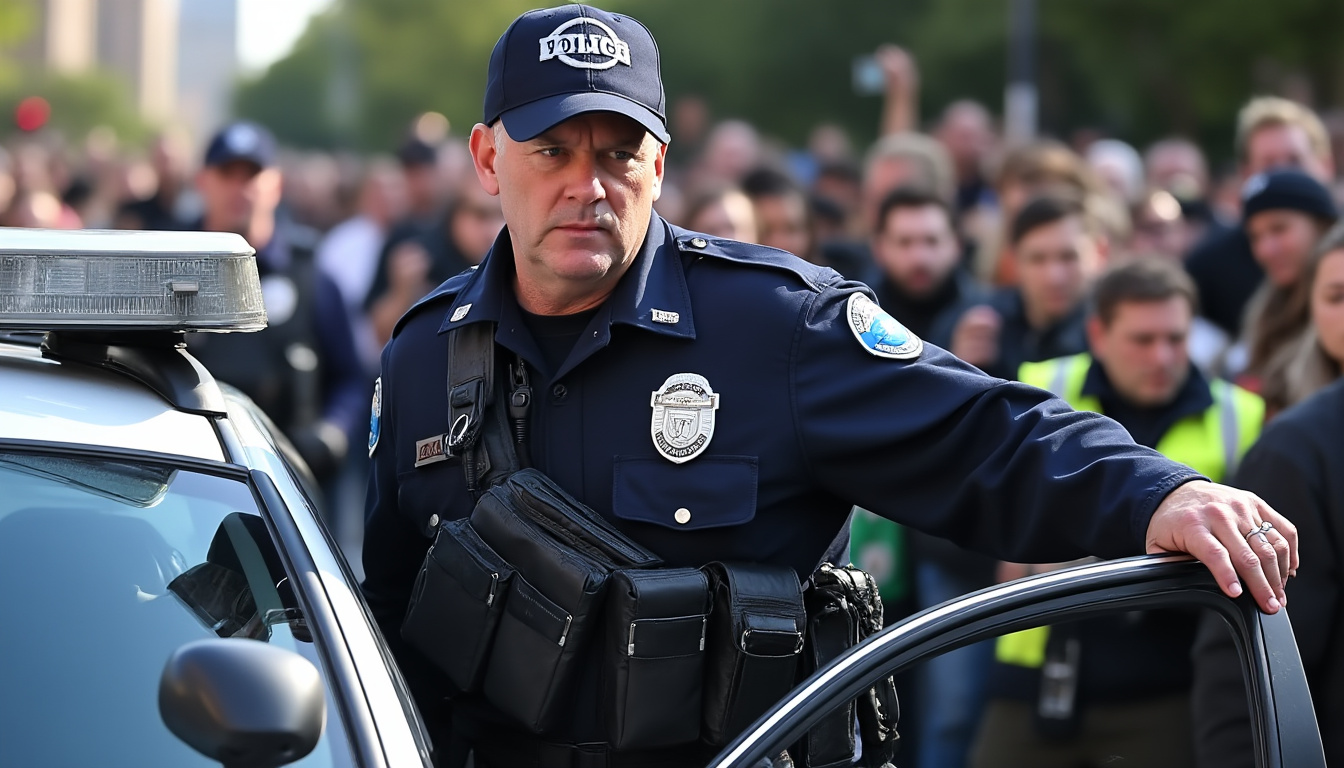A police officer injured during an intervention against an urban rodeo in Val-de-Marne

Urban violence, particularly through wild rodeos, has become a recurring theme in public debates about security in France. On May 18, 2025, a new incident occurred in Thiais, in Val-de-Marne, where a police officer was injured while trying to intervene to put an end to an urban rodeo. This event underscores the growing extent of this phenomenon, the challenges faced by law enforcement, and the repercussions on public safety.
Definition and context of urban rodeos
Urban rodeos are often perceived as manifestations of contestation against authority, but they also reveal deeper social issues. This phenomenon consists of driving vehicles, often motorcycles or quads, in a dangerous and illegal manner in urban spaces. These activities, which often attract crowds, endanger not only the participants themselves but also pedestrians and other road users.

Origins of the phenomenon
Originally, urban rodeos emerged in the 1990s in certain French suburbs. They were often the result of frustration due to difficult socio-economic conditions, with young people looking for means of escape and expression. The growing popularity of all-terrain vehicles also played a crucial role in normalizing these practices.
Here are some factors that explain the rise of urban rodeos:
- The search for adrenaline: Many participants are driven by a desire for thrills.
- Socio-economic factors: In some regions, young people may feel excluded and use these activities as a way to gather.
- Difficulties accessing sports facilities: Due to lack of resources, many young people do not have access to supervised activities.
This context has therefore contributed to the proliferation of these rodeos, often exacerbated by a lack of police visibility during these events.
Consequences for public safety
Urban rodeos represent a real challenge for the authorities. Not only do they endanger the lives of participants and bystanders, but they also generate noise pollution and deteriorate the social climate. Interventions by law enforcement can, as seen in Thiais, lead to violent confrontations.
A summary table of observed consequences:
| Type of consequence | Examples |
|---|---|
| For participants | Accidents, injuries. |
| For law enforcement | Risks of injury during interventions, as seen in Thiais. |
| For bystanders | Increased fears, potential accidents. |
| For society | Feeling of insecurity, degradation of quality of life. |
It is essential to analyze these consequences as a whole to better understand the need for more effective interventions, whether in terms of prevention or security.
Towards better security
The situation in Thiais is not an isolated case; it illustrates the complexity of a problem that requires multidimensional solutions. Law enforcement, although often undervalued in their role of maintaining security, must deal with challenges related to respect for authority and crowd management. The proposed law aimed at reinforcing urban security, particularly concerning rodeos, must be studied carefully.
Preventive measures
Several initiatives could be implemented to prevent these situations:
- Education and awareness: Inform young people about the dangers of these activities.
- Promotion of legal sports activities: Offer alternatives that meet the interests of young people.
- Collaboration with municipalities: Establish neighborhood activity programs to channel energies.
These measures can help create a safer and more serene environment for both young people and residents of the affected neighborhoods.
Legislative and police approach
A legislative decision is essential to more strictly address urban rodeos. Current laws need to be strengthened to increase penalties for illegal behaviors. This includes:
- Increasing fines for offenders.
- Prison sentences for repeat offenders.
- Establishing surveillance measures, such as drones, to spot these activities in time.
In this regard, the use of new technologies, such as surveillance DRONES, could prove crucial for anticipating and intervening quickly during these rodeos.
The case of Thiais: A troubling reminder
The events in Thiais clearly highlight the inherent danger of urban rodeos. In May 2025, the injured police officer faced an unpredictable situation where several individuals deliberately collided with police officers.

The circumstances of the incident
On the ground in Thiais, the police were called to intervene around 4 PM to put an end to a rodeo. Upon arrival, the officers were exposed to unprecedented violence, with motocross bikes deliberately charging towards them. In this confrontation, a police officer was injured in the shoulder and knee, requiring hospitalization.
It is essential, in these contexts, to assess the impacts of such an event:
- Risks to the lives of law enforcement officers.
- Psychosocial impact on the police community.
- Reactions from the population, ranging from incomprehension to solidarity.
It is not only a matter of physical violence or injuries, but also the psychological impact on law enforcement and how society perceives it. Law enforcement must cope with changes in behavior from a population that may feel despair and for whom revolt takes various forms.
Investigation and prosecutions
Following the incident, four individuals were arrested, underscoring the importance of a rapid and coordinated response from the police forces. An investigation has been opened to address violence against public authority representatives.
Prosecutions must be exemplary, but they must also ensure the preservation of the social fabric of the community. The perception that the judicial system faces and provides responses to these events can play a crucial role in preventing future incidents.
Societal implications and future challenges
Urban rodeos and the ensuing violence reveal a social fracture that cannot be ignored. They pave the way for discussions on inequality, the feeling of abandonment, and the need for a structured intervention at multiple levels.
Role of businesses
Businesses, such as Société Générale, can also play a role in combating this phenomenon. By sponsoring community events or supporting prevention initiatives, they could help redirect young people towards positive activities.
It is imperative that various entities, including businesses, partner with local communities and public authorities to establish a framework for productive collaboration.
A collective responsibility
Every actor in society has a role to play: citizens, businesses, local authorities, and law enforcement. By fostering a culture of respect for public safety, we can hope to reduce such tragedies. Urban rodeos should no longer be seen as a legitimate form of expression, but as a threat to the community itself.
With concrete measures and commitment, it is possible to achieve a balance where everyone will feel safe in their neighborhoods.
Source: actu.fr
Leave a Reply



Articles relatifs